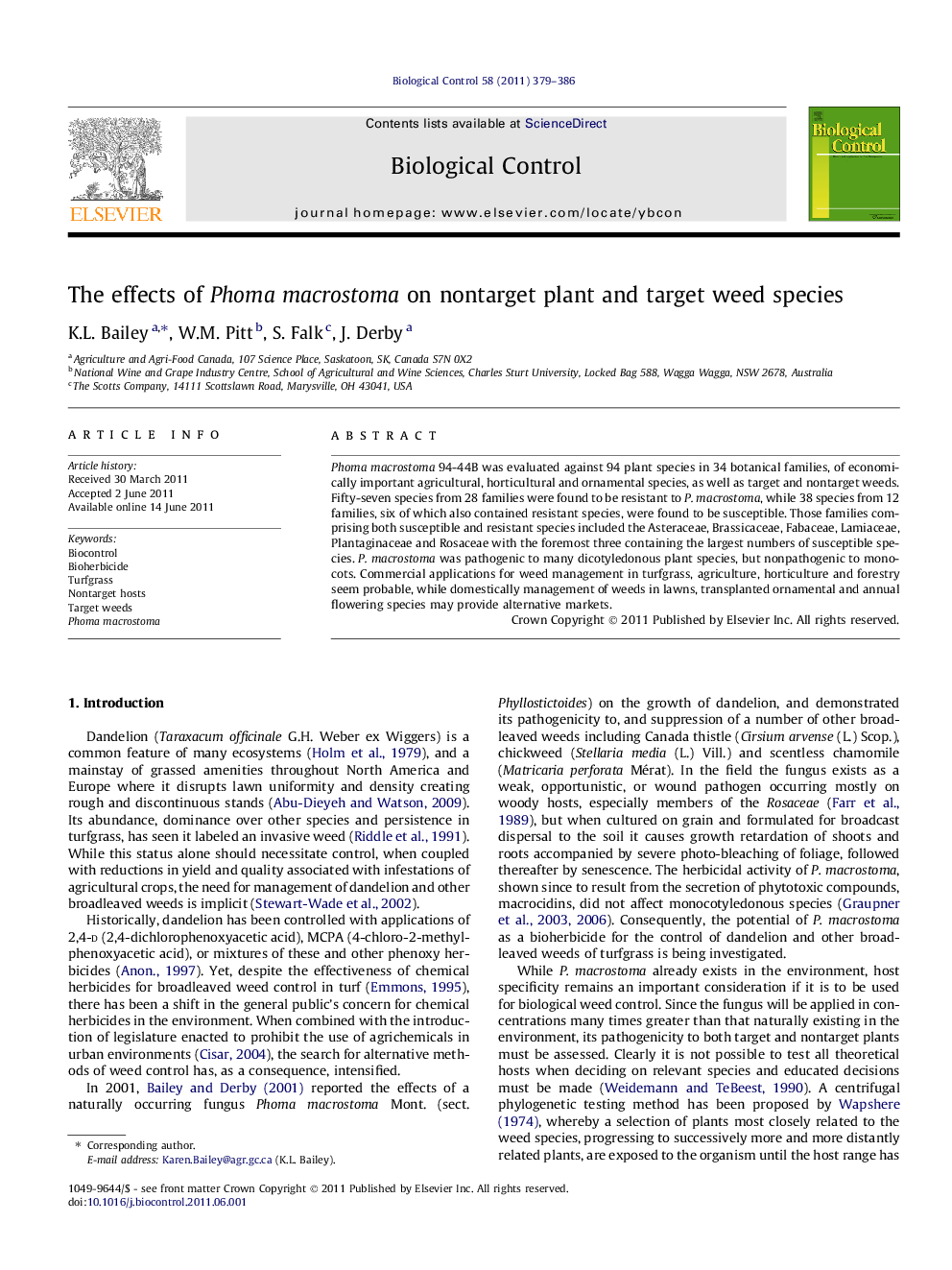| Article ID | Journal | Published Year | Pages | File Type |
|---|---|---|---|---|
| 4504273 | Biological Control | 2011 | 8 Pages |
Phoma macrostoma 94-44B was evaluated against 94 plant species in 34 botanical families, of economically important agricultural, horticultural and ornamental species, as well as target and nontarget weeds. Fifty-seven species from 28 families were found to be resistant to P. macrostoma, while 38 species from 12 families, six of which also contained resistant species, were found to be susceptible. Those families comprising both susceptible and resistant species included the Asteraceae, Brassicaceae, Fabaceae, Lamiaceae, Plantaginaceae and Rosaceae with the foremost three containing the largest numbers of susceptible species. P. macrostoma was pathogenic to many dicotyledonous plant species, but nonpathogenic to monocots. Commercial applications for weed management in turfgrass, agriculture, horticulture and forestry seem probable, while domestically management of weeds in lawns, transplanted ornamental and annual flowering species may provide alternative markets.
Graphical abstractFigure optionsDownload full-size imageDownload as PowerPoint slideHighlights► Target and nontarget plant species were inoculated with Phoma macrostoma. ► Many dicotyledoneous species displayed photobleaching symptoms and plant mortality. ► Monocotyledoneous species were unaffected. ► P. macrostoma may be used to control broadleaved weeds in lawns and some crops.
